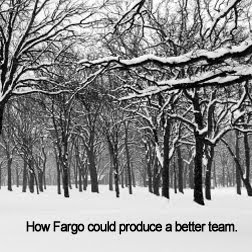
Many people had a chuckle after learning about a sales team that was given an all-expenses-paid trip to Fargo, North Dakota, for missing their sales goals. Had they hit those goals, the makers of Hot Tamales would have sent them to Hawaii instead.
But some executives might ask whether or not it was smart. Infinitely so.
Just Born, the family-owned candy manufacturer that has been in business for eight decades (three generations), believes in motivating and engaging employees. One of its many philosophies includes that great things happen when everyday courtesy, kindness, and humor are woven into all our personal and professional interactions. And the Fargo team vacation underscores it well.
While some companies create incentive programs that make employees feel like they lost something, this company simply gave them something else. So instead of having an office filled with people who "lost" going nowhere, about two dozen sales people shared an experience that may even be a better team building vacation than had they won the most luxurious team trip.
Case in point. One of the sales associates told the AP, succinctly in good spirits, "Twenty to 30 years down the road, when we see each other, we're going to say, 'Remember Fargo?'" Whereas nobody seems to be dwelling on how they lost a trip to Hawaii, which is what they would have done otherwise. Worse, they might have even second guessed their sales, which increased by two percent (as opposed to the goal of four percent).
Developing Incentive Programs That Work.
Many employers put significant thought into employee reward programs, but sometimes they forger that employees do too. When faced with a rewards program, many employees ask: do I value the reward, can I realistically achieve the results, and is the reward really related to my (or my team's) performance?
Case in point. I worked with one company years ago that gave employees annual bonuses related to individual store sales, with the managers (up to 5 percent), assistant managers (up to 5 percent), and employees (up to 1/2 percent) receiving a scaled percentage of their salary as a bonus. While store managers seemed to be motivated (they received credit for new clients), it didn't connect with many employees — in-store sales people, stock personnel, or delivery drivers.
Why not? Because the bonuses were not related their performance. They were more motivated to excel in areas related to their job descriptions (and semi-annual raises).
In some cases, the program even split the team because as managers left the store to find new clients, employees felt deserted by management. In other cases, managers would aggressively pursue the bonuses as money they already counted on at the end of the year, sometimes wearing their performance emotions on their sleeves.
Even more daunting, store managers were also competing with outside sales reps. What made that especially interesting, however, is that outside reps' sales had to be filled at stores (and stores received credit for those sales). In sum, it was a mess.
Keep It Sweet, Simple, And Equal.
Now take a good look at the Hot Tamales sales incentive. The incentive was simple, sweet, straightforward, and singular in how it was structured. But best of all, even when the team didn't achieve its goal, they received something that fits in nicely with the company's philosophy, sense of humor, and is a memorable team building opportunity (maybe even more so than if they had received a trip to Hawaii).




















